The Black Douglases of St Bride's Church (Part One)
An unassuming church in southern Scotland contains the mausoleum of medieval Scotland's most powerful noble dynasty. Let's meet them.
Hello, I’m Beth! I’m a full time creator based in the Cairngorms in love with Scotland and Scottish history. Subscribers receive weekly newsletters about Scotland’s history and folklore, and a little about my life living and adventuring in this country. If you’d like to support my work as a writer, you can become a paid subscriber.
Interested? Click subscribe…
St Bride’s Church is located in the middle of Douglas, a small village on the banks of the Douglas Water in South Lanarkshire. At first glance, the church is rather unassuming. It sits atop the crest of a small slope, surrounded by a graveyard and pretty stone cottages. It is partly ruined, partly intact. A sign on the gate informs passersby that the church is locked, but that the key can be collected from a local address. Essentially, one has to go out of their way to gain access to this small building. My goodness, it is worth it.
Despite its modest appearance, this church is anything but unimportant. Although much of what we can see today dates to the 14th century, a church in Douglas has been recorded here since the 12th century. The current ruins were once a thriving replacement for the original building, possibly constructed around the same time that the Black Douglases began to form a close association with the church.
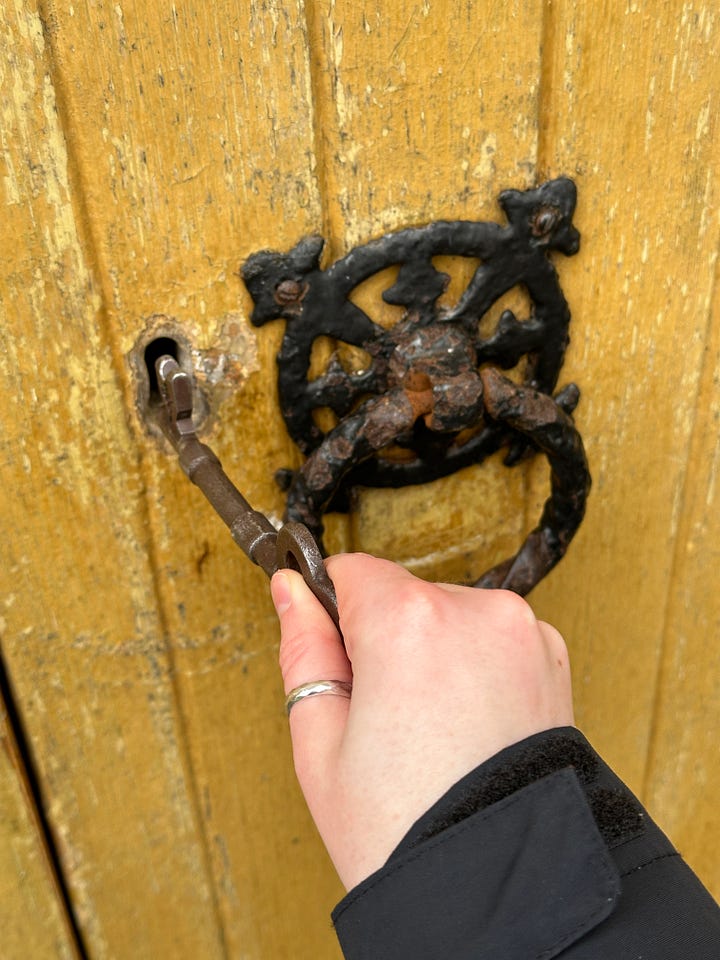
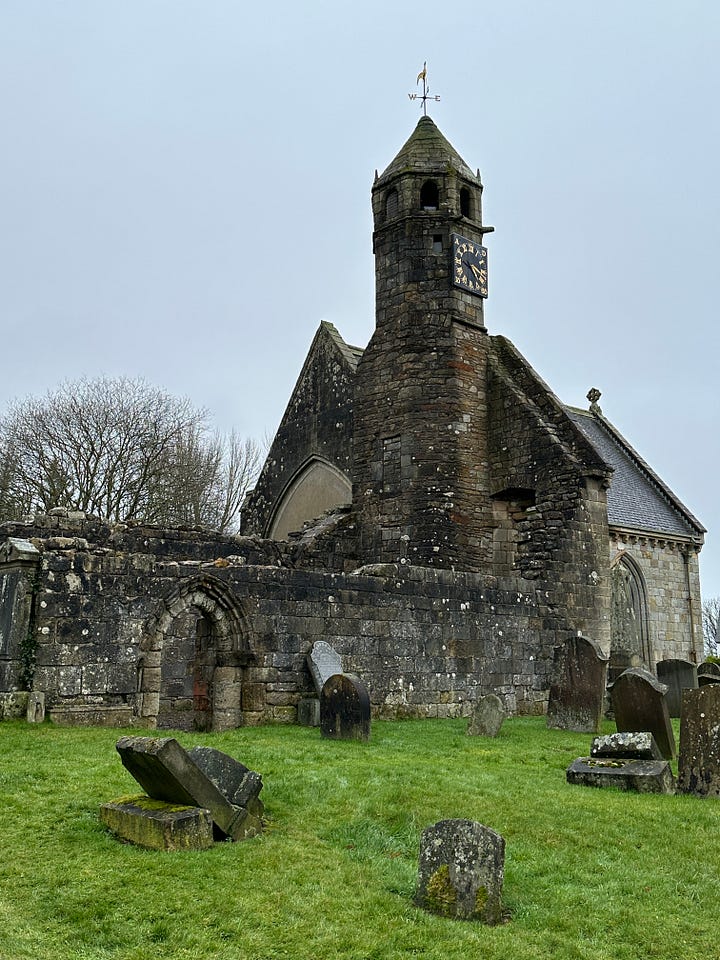
There are three crucial features which tell us of this church’s link with that powerful family. Firstly, it is located in the original Douglas heartlands and only 1 mile from Douglas Castle, their former stronghold. It was not uncommon in medieval Scotland for principal residences to be situated about a mile or so from an important religious site. This provided suitable access for aristocratic families to religious institutions, and also set the route for processions on religious feast days. Other examples of this approximate distance between a home and church include Stirling Castle and Cambuskenneth Abbey, Doune Castle and Kilmadock Parish Church, and Kildrummy Castle and Kildrummy Parish Church.
Secondly, the church is dedicated to a saint who is connected to the Black Douglases. St Bride, or St Brigid, is one of the patron saints of Ireland, and was an Irish abbess said to have lived during the 5th or 6th centuries. Some would argue that she may not have even existed, but that she was actually the Christianisation of the Celtic goddess, Brigit. Either way, the cult of St Brigid/Bride became heavily venerated in Scotland with a huge number of churches dedicated to her, particularly in the west of Scotland. The Black Douglases, as a major noble family from this region, would naturally have been drawn to her, and at some point she became their official patron saint. She remained of great spiritual importance to the family. For example, on February 1st (her feast date) 1330, James ‘the Black’ Douglas made a major grant to Newbattle Abbey in honour of St Bride/Brigid, on the eve of his final departure from Scotland to go on crusade.
Not much remains of St Bride’s Church, with the south aisle of the nave in ruins and only hints of its past grandeur to be spotted in the stonework and doorways. However, adjoined to these ruins is the choir, which has been reroofed and restored. This has resulted in the survival of the third and most significant feature that connects this church to the Black Douglases. Inside the choir, is a Black Douglas mausoleum.
Discovering intact and detailed medieval effigies is quite a feat in Scotland. The Scottish Reformation of 1560 and the subsequent abandonment of medieval institutions saw to the destruction of the vast majority of Scotland’s noble and royal tombs. For instance, the royal mausoleum at Dunfermline Abbey once contained the effigies of kings and queens of Scots like Robert the Bruce and Saint Margaret, but now lies empty. To walk into St Bride’s Church and see with your own eyes the resting places and effigies of a family as powerful as the Black Douglases, is to witness a significant and sorely rare historical survival.

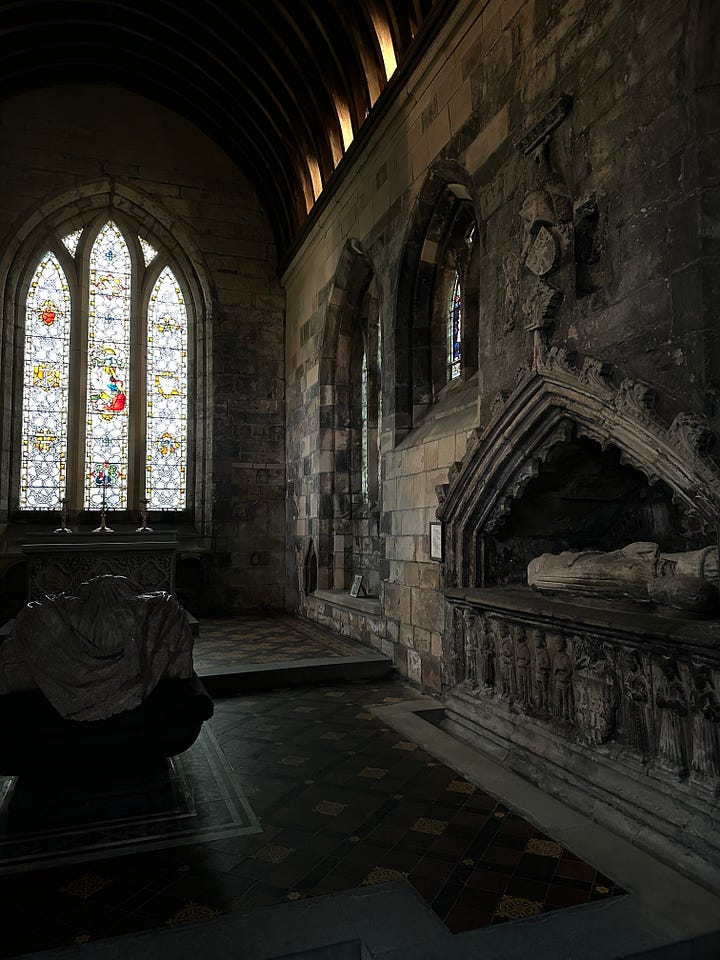
But who were the Black Douglases, and why were they such a big deal?
The Black Douglases were the epitome of power as a result of warfare. They rose to prominence during the Scottish Wars of Independence, going from a noble family of relative importance to becoming the right hand of the king and the most notorious warlords of medieval Scotland. For a century and a half, they dominated Scotland’s political stage and forged a reputation for military prowess, particularly against England and in the Anglo-Scottish borderlands but also reaching into France. Their end was as destructive as their beginning, murdered and destroyed at the hands of King James II from 1452 to 1455.
Some of medieval Scotland’s most fascinating characters were part of or associated with the Black Douglases. William ‘the Hardy’, Hugh ‘the Dull’, James ‘the Black’ (or ‘Good’, depending which side of the Anglo-Scottish border you found yourself on), Archibald ‘the Grim’, and James ‘the Gross’ are but a handful of extensively described figures from this family. Many major elite women were also central to the Black Douglas rise to power, prominence in landholding, and survival: Joanna Murray of Bothwell and Drumsergard, Beatrice Sinclair, Princess Margaret Stewart, Euphemia Graham, and Margaret Fair Maid of Galloway.

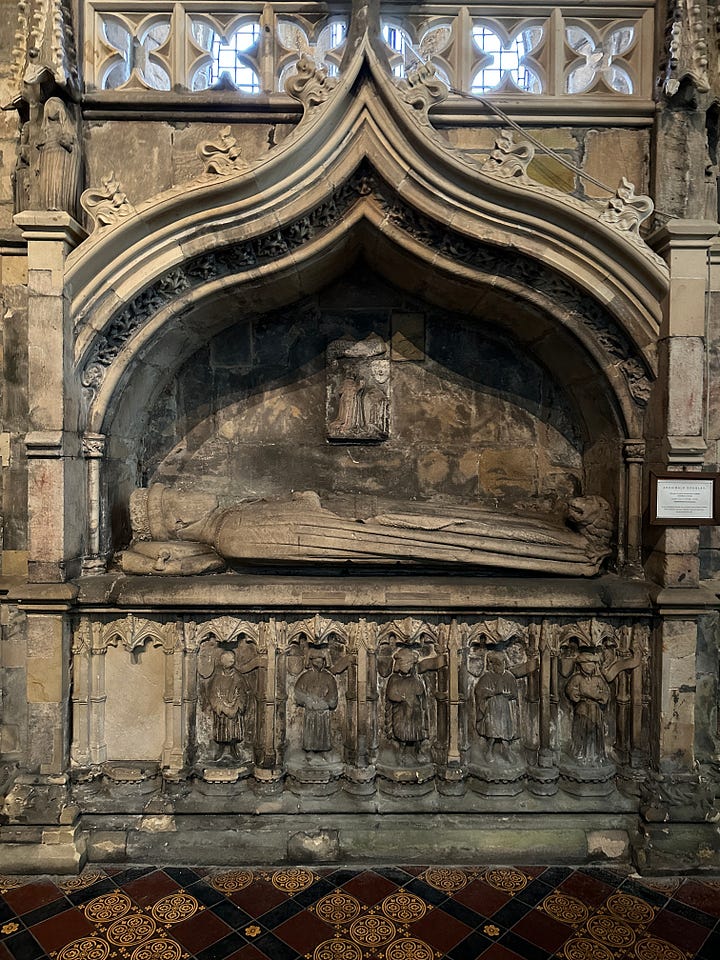
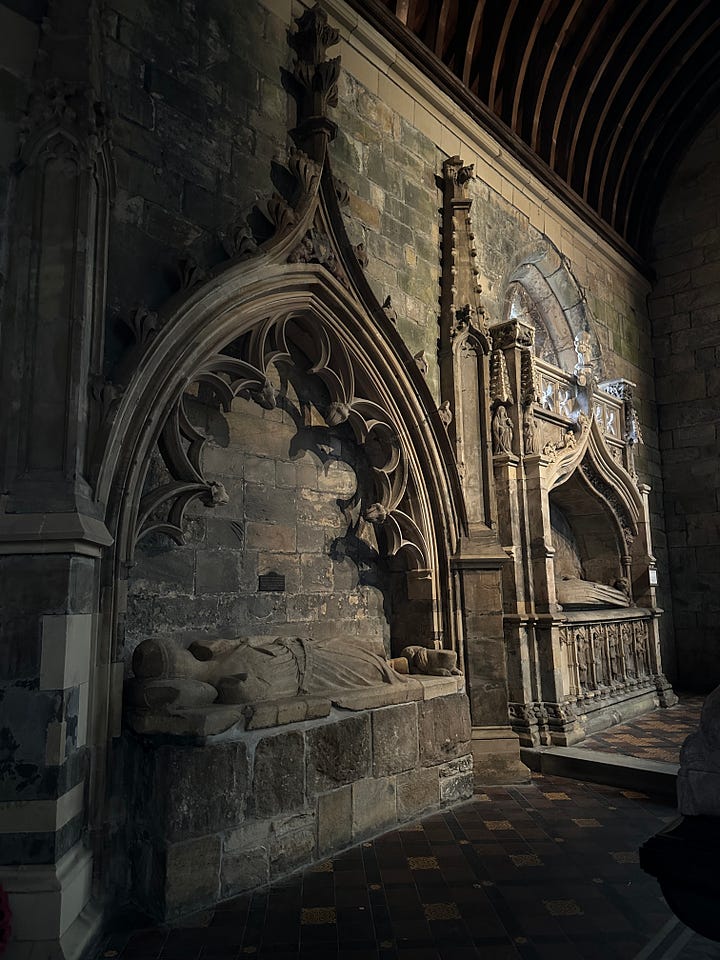
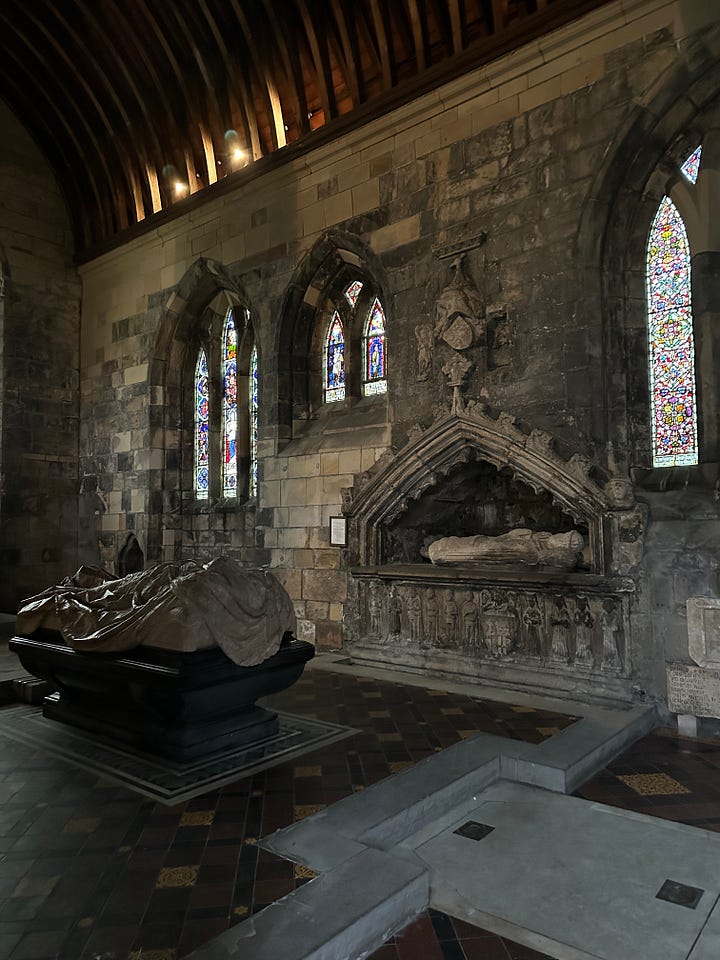
In St Bride’s Church, you will find three prominent Black Douglas tombs: James ‘the Black’ Douglas; Archibald Douglas, the 4th Earl of Douglas and Duke of Touraine; and James ‘the Gross’ Douglas and his wife, Beatrice Sinclair. Over the next few weeks, we’ll explore these tombs together as I bring you the dramatic and often gruesome history of these Black Douglas figureheads.
Until next week!
Beth xx

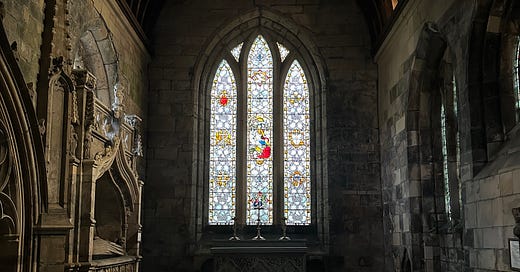



What a historic site for an amazing family, looking forward to part 2 already!
As Douglas nicknames go, it’s hard to beat the 5th Earl of Angus, Archibald “Bell-the-Cat”.